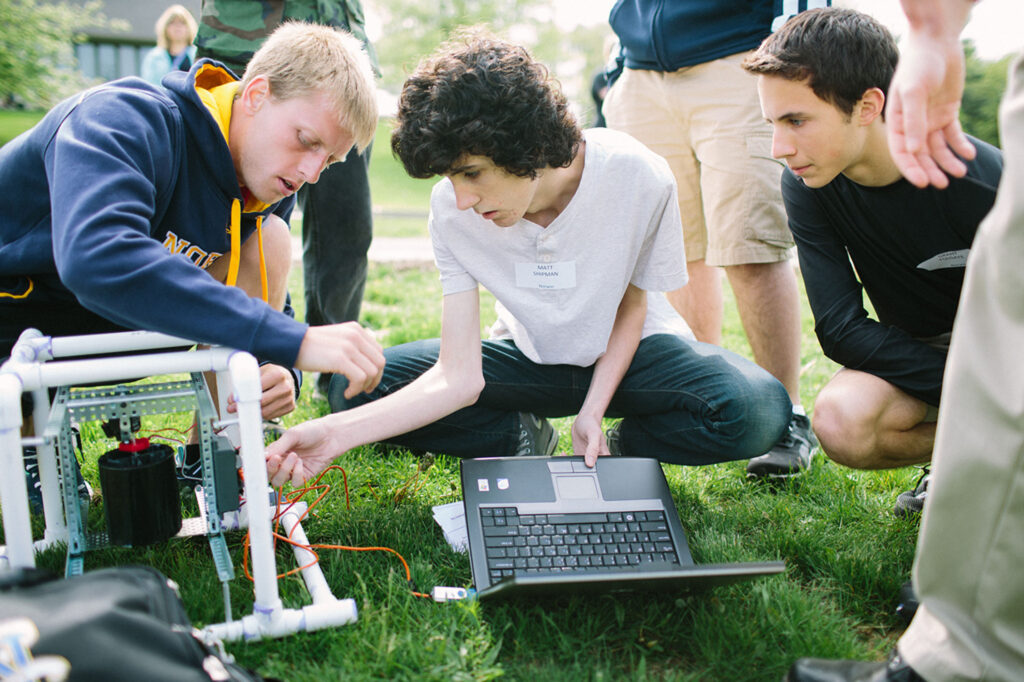In even the most innovative classroom settings, there are a couple of standard things students can expect.
A curriculum, for example. Assignments.
A new course in Middlebury, Vermont does away with such pesky conventions. Rather, it grants students the agency to design their own curricula and pick their own study topics.
“What’s the Story” is a year-long course created by students and alumni of Middlebury College’s Bread Loaf School of English. Aided by Vermont’s Act 77, which allows for more flexibility in course offerings and settings, the educators worked up an unusual opportunity for middle and high school students to investigate issues that matter to them and their communities.
Students from across the state were selected to participate in the pilot run, beginning in the fall of 2015. Their open-ended task: come up with a project that could effect positive change. Working in mixed-grade groups of their choosing, the students devised research plans on topics ranging from energy-efficient housing to the state’s foster care system. Each group eventually created a multimedia production that communicated their findings.
The class met in person on occasion, including four overnight retreats, but the groups communicated virtually, from different towns and schools, throughout the year. Their teachers acted more like coaches, posing questions to deepen students’ critical thinking, and helping guide the research when necessary, but leaving all the action to the young people. The participants received English class credit for the course.
The final products from “What’s the Story” demonstrate young people’s breadth of interests and backgrounds.
One group, which included a volunteer firefighter, traveled around the state to investigate the fall-out from a consolidation of Vermont’s emergency dispatch centers. The students wrote a letter to a newspaper editor and created a film, which they screened for a local fire department. Another group interviewed their classmates and teachers about gender identity, making an educational and personal documentary film and leading workshops in high school classrooms. All the students shared their musings, successes, and frustrations on a class blog throughout the year.
For the creators of “What’s the Story,” letting students choose their own research topics was a key piece of the plan.
“The big challenge is to make sure the students are really emotionally engaged in the work they’re doing,” Bill Rich, a creator of the course, told Middlebury Magazine. Rich coordinates the Bread Loaf Teacher Network, a collaborative community of educators who graduated from Bread Loaf, some of whom developed “What’s the Story” together.
When students are allowed to pursue their own interests, Rich and many learning scientists believe, they are genuinely motivated to work hard, delve deep into ideas, and build skills that will come in handy later in life. This kind of interest-driven learning stokes curiosity and creativity—important skills for a generation of students who will become future civic leaders and innovators.
Students participants recognized that the coursework mimicked, in some ways, the work they’ll be asked to do as adults. One group initially struggled with direction, disagreeing about the research topic and returning to the drawing board several times. Figuring out how to square those differences and collaborate productively was a helpful lesson.
“Beyond high school, if you’re doing a project with someone it’s not going to be a four-day thing—you’re going to be working with these people for months,” one of the students told Middlebury Magazine. “It was really useful to figure out how that works.”
Collaboration was a theme throughout the course—for its creators as well as its students. The strong Bread Loaf network enabled the teachers to bring in students from diverse and remote areas of the state. Rich and his colleagues dream of scaling up the “What’s the Story” model for larger—possibly statewide or national—implementation.
But just as the students were told to reflect critically on their processes, the designers of the course are asking themselves important questions. For whom does this model work? Only highly self-motivated students like those selected for “What’s the Story,” or for students with varying learning styles and speeds? Would a pared-down version be successful in a traditional school setting?
At the very least, the student projects are testaments to the potential of young people to create powerful work—when they get the chance.
